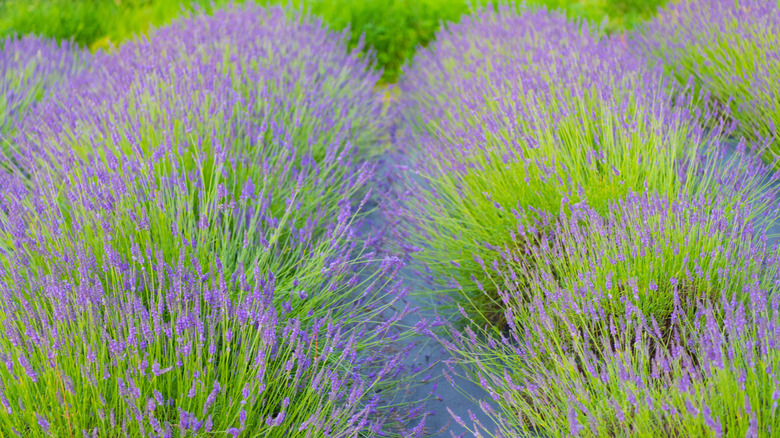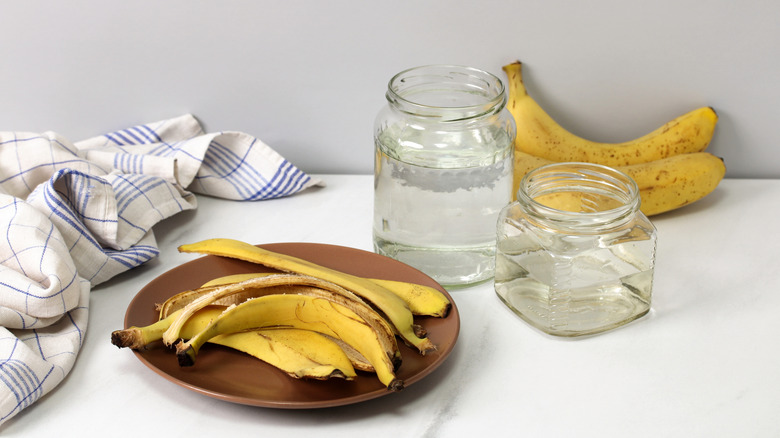The Banana Hack Some Gardeners Swear By For Thriving Lavender (& If It Really Works)
From its beautiful blooms to its intoxicating scent, lavender brings a lot to the table. But to enjoy the many benefits of growing lavender in your backyard, you must give these plants all the nutrients they need to thrive. Lavender comes in several varieties, like English lavender (Lavandula angustifolia) and French lavender (Lavandula dentata), and all of them have somewhat different needs. Potassium, however, is a vital nutrient for all lavender species. And when it comes to cheap, easy sources of the element, it's hard to beat banana peels.
Studies have shown that potassium can aid in germination and growth for some plants, and many gardeners swear that it helps lavender grow taller and produce more flowers. This makes sense, as scientists have found that plants without enough potassium have stunted growth and smaller yields. Potassium aids in root growth, too, which boosts plants' resistance to droughts. Additionally, it can reduce water loss and aid photosynthesis. Because of these benefits, potassium helps improve a plant's resilience during times of stress, and some gardeners use it to help get their lavender through winter weather. So, the question is not whether you should use those banana peels to help feed your lavender plants. Instead, the question is: What is the best way to use them?
How to use banana peels to help your lavender thrive
Every gardener that uses banana peels has a favorite way of adding them to the soil. There is one method, however, that may make the most of them. Cut up the banana peels into smaller pieces, wash them, and then let them air-dry for about three days. This will help you avoid issues with mold. When the banana peels are ready, insert them into the soil about 1 or 2 inches below the surface, around the base of the plants; this way, you'll get them as close as possible to the lavender's roots. The key to success is ensuring that potassium is available within the plant's root zone, as it tends not to venture far from where it's applied. You can repeat this process as often as once a month.
There are many benefits to composting at home. And if you eat more bananas than you have room for in the garden, the ability to toss them into your compost pile instead of letting them go to waste is a great reason to start a bin. The potassium will be added to your compost and ready for future use, along with the wide variety of nutrients from the rest of your yard and kitchen scraps. Some suggest there may be drawbacks to using banana peels as fertilizers, especially for houseplants, so be sure to do your homework before implementing this hack.

